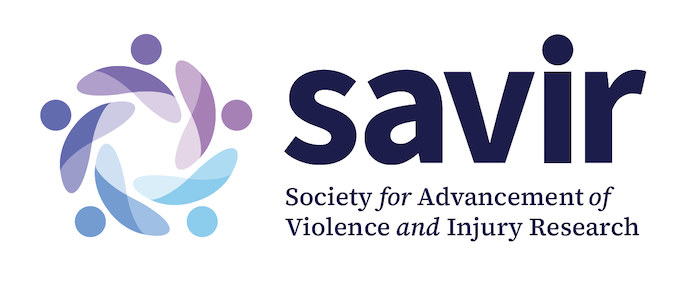Details
March 31 (4:25PM) - April 30 (4:25PM), 2020
New Suicide Prevention Funding Opportunity from CDC’s Injury Center
April 30, 2020: Due Date for Letter of Intent
Comprehensive Suicide Prevention (CDC-RFA-CE20-2001) will support the implementation and evaluation of CDC’s comprehensive public health approach to suicide prevention. The purpose of this notice of funding opportunity (NOFO) is to implement and evaluate this approach to suicide prevention, with attention to vulnerable populations* that have higher suicide rates than the general population and account for a significant proportion of the suicide burden. The program’s goal is to reduce suicide and suicide attempts in vulnerable populations by 10%.
|
Suicide is a growing public health crisis in the United States. In 2018, suicide took more than 48,000 lives, with rates increasing 35% since 1999. Suicide has devastating consequences on individuals, families, schools/workplaces, and entire communities. There is no single cause of suicide. Factors increasing suicide risk occur at the individual, relationship, community, and societal levels and may include job/financial, health, criminal/legal, and relationship problems, substance use, loss of a friend or loved one to suicide, a history of suicide attempts, and mental health concerns, among others.
In order to address this range of risk factors and prevent suicide, CDC’s comprehensive public health approach to suicide prevention is needed. This approach includes the development of a strategic action plan with the following components:
- Strong leadership to convene and connect multi-sectoral partnerships
- Use of data to identify vulnerable populations with increased risk of suicide and to better characterize risk and protective factors in these populations
- Inventory of existing programs; identification of gaps in prevention for the vulnerable population(s); and selection of multiple policies, programs, and practices with the best available evidence using CDC’s Preventing Suicide: A Technical Package of Policy, Programs, and Practices
- Rigorous evaluation of the overall approach and individual activities
- Use of data for continuous quality improvement and sustained impact
- Develop, implement, and evaluate a communication and dissemination plan
Pending available funding, CDC’s Injury Center intends to commit approximately $7 million per year for five years to support up to ten cooperative agreement recipients.
More information is available at Grants.gov
For questions about this announcement, please email: CSP20-2001@cdc.gov
Important Dates
|
|
|
- April 8, 2020: Pre-Application Conference Call to address questions from eligible applicants. Questions and answers from the discussion will be shared online and included in an amended NOFO.
- April 30, 2020: Due Date for Letter of Intent
- May 26, 2020: Due Date for Applications
* Vulnerable populations include, but are not limited to, veterans, tribal populations, rural communities, LGBTQ, and people who are homeless.
|
Printer-Friendly Version
Add to Calendar
aCLuDhaqizCaPxAftmqF167204
03/31/2020 04:25 PM
04/30/2020 04:25 PM
true
New Suicide Prevention Funding Opportunity from CDC’s Injury Center
Comprehensive Suicide Prevention (CDC-RFA-CE20-2001) will support the implementation and evaluation of CDC’s comprehensive public health approach to suicide prevention. The purpose of this notice of funding opportunity (NOFO) is to implement and evaluate this approach to suicide prevention, with attention to vulnerable populations* that have higher suicide rates than the general population and account for a significant proportion of the suicide burden. The program’s goal is to reduce suicide and suicide attempts in vulnerable populations by 10%.
Suicide is a growing public health crisis in the United States. In 2018, suicide took more than 48,000 lives, with rates increasing 35% since 1999. Suicide has devastating consequences on individuals, families, schools/workplaces, and entire communities. There is no single cause of suicide. Factors increasing suicide risk occur at the individual, relationship, community, and societal levels and may include job/financial, health, criminal/legal, and relationship problems, substance use, loss of a friend or loved one to suicide, a history of suicide attempts, and mental health concerns, among others.
In order to address this range of risk factors and prevent suicide, CDC’s comprehensive public health approach to suicide prevention is needed. This approach includes the development of a strategic action plan with the following components:
Strong leadership to convene and connect multi-sectoral partnerships
Use of data to identify vulnerable populations with increased risk of suicide and to better characterize risk and protective factors in these populations
Inventory of existing programs; identification of gaps in prevention for the vulnerable population(s); and selection of multiple policies, programs, and practices with the best available evidence using CDC’s Preventing Suicide: A Technical Package of Policy, Programs, and Practices
Rigorous evaluation of the overall approach and individual activities
Use of data for continuous quality improvement and sustained impact
Develop, implement, and evaluate a communication and dissemination plan
Pending available funding, CDC’s Injury Center intends to commit approximately $7 million per year for five years to support up to ten cooperative agreement recipients.
More information is available at Grants.gov
For questions about this announcement, please email: CSP20-2001@cdc.gov
Important Dates
April 8, 2020: Pre-Application Conference Call to address questions from eligible applicants. Questions and answers from the discussion will be shared online and included in an amended NOFO.
1:00-2:00 PM Eastern Time
Toll-Free Number: 800-988-9479
Participant code: 1270825
Web Link: https://adobeconnect.cdc.gov/roxy3u4743mc/
April 30, 2020: Due Date for Letter of Intent
May 26, 2020: Due Date for Applications
* Vulnerable populations include, but are not limited to, veterans, tribal populations, rural communities, LGBTQ, and people who are homeless.
----




